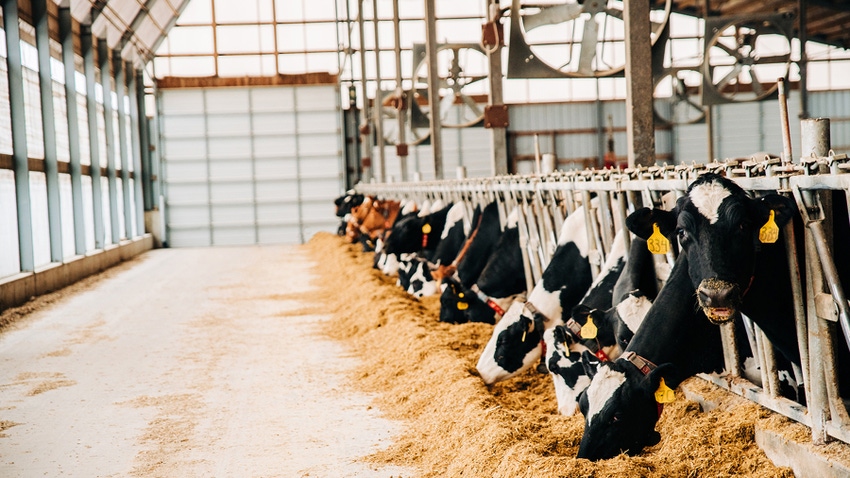
Courtney Halbach, University of Wisconsin Extension Dairyland Initiative outreach specialist, says now is a great time to make sure the ventilation systems in your dairy barns and calf barns are in good working order — before winter sets in.
According to Halbach, dairy cows are most comfortable when temperatures are between 40 and 70 degrees F.
“That’s their sweet spot — they don’t need to expend extra energy to keep warm or cool off,” she says. “Cows are more cold-tolerant than they are heat-tolerant. We don’t see as many detrimental effects of cold weather as we do of hot weather.”
Halbach says cows produce a lot of heat. “Their rumens are working, they are producing a lot of milk, and they are generating a lot of heat on their own,” she explains. “They can handle cool weather a lot easier than humans.
“Here in the Midwest and on the East Coast, we have plenty of days where we are outside of those ideal temperatures, and are either too hot or too cold. The question is, how do we manage around those lower temperatures once it starts getting below 40 degrees?”
What is ventilation?
“Ideally,” Halbach says, “ventilation brings fresh air into a building. Fresh air replaces heat, moisture, noxious gases and pathogens. Ventilation is extremely important.”
She notes that it is important to keep barns dry.
“Moisture increases the survival of bacteria in the air,” Halbach explains. “At high humidity levels, the droplets are smaller, allowing deeper penetration.”
When ventilating a barn, there are four target areas, according to Halbach:
Create sufficient air exchange to remove heat, dust, noxious gases and moisture from the barn.
Provide the target air speed in the resting-area microenvironment.
Make sure the system works well across all four seasons — especially winter.
Find a system that is economical.
Calves are affected more by cold stress than cows. According to Halbach, the ideal temperature for newborn calves is between 50 and 78 degrees.
“As they get a little older, their cold tolerance increases too,” she says. “For 1-month-old calves, the ideal temperature range is between 32 degrees and 73 degrees F. We need to be extra conscientious about keeping newborn calves warm.”
Methods for doing that, Halbach says, include:
Increasing feeding rates and making sure they have an adequate amount of colostrum.
Offering plenty of clean, dry bedding.
Using calf jackets for added protection.
“No matter what your ventilation system is, it’s important that calves are kept in a nice, warm, dry place,” Halbach says. “Calves are susceptible to respiratory disease, and high moisture can contribute to that.”
A poor ventilation system can increase the risk of pneumonia in both cows and calves.
Time to clean fans
Halbach says fall is the perfect time of year to put on a mask and clean the fans.
“Fans can get a buildup of dust and debris,” she says. “Make sure the fans are oiled, the belts are tight, and they are doing the job they are supposed to do. Buildup on fans can reduce their efficiency by 24%.”
The minimum ventilation rate in cold weather for both cows and calves is the air should change in a building four times per hour, Halbach says.
Stocking density in a dairy barn plays a role in air quality, she notes. “If a barn is overstocked, increase the ventilation rate, but be aware, that will also make the barn colder,” she says.
When temperatures fall below 40 degrees, Halbach recommends closing side curtains.
“When you are around during the day, open the curtains to air out the barn,” she says.
Read more about:
Livestock FacilitiesAbout the Author(s)
You May Also Like






